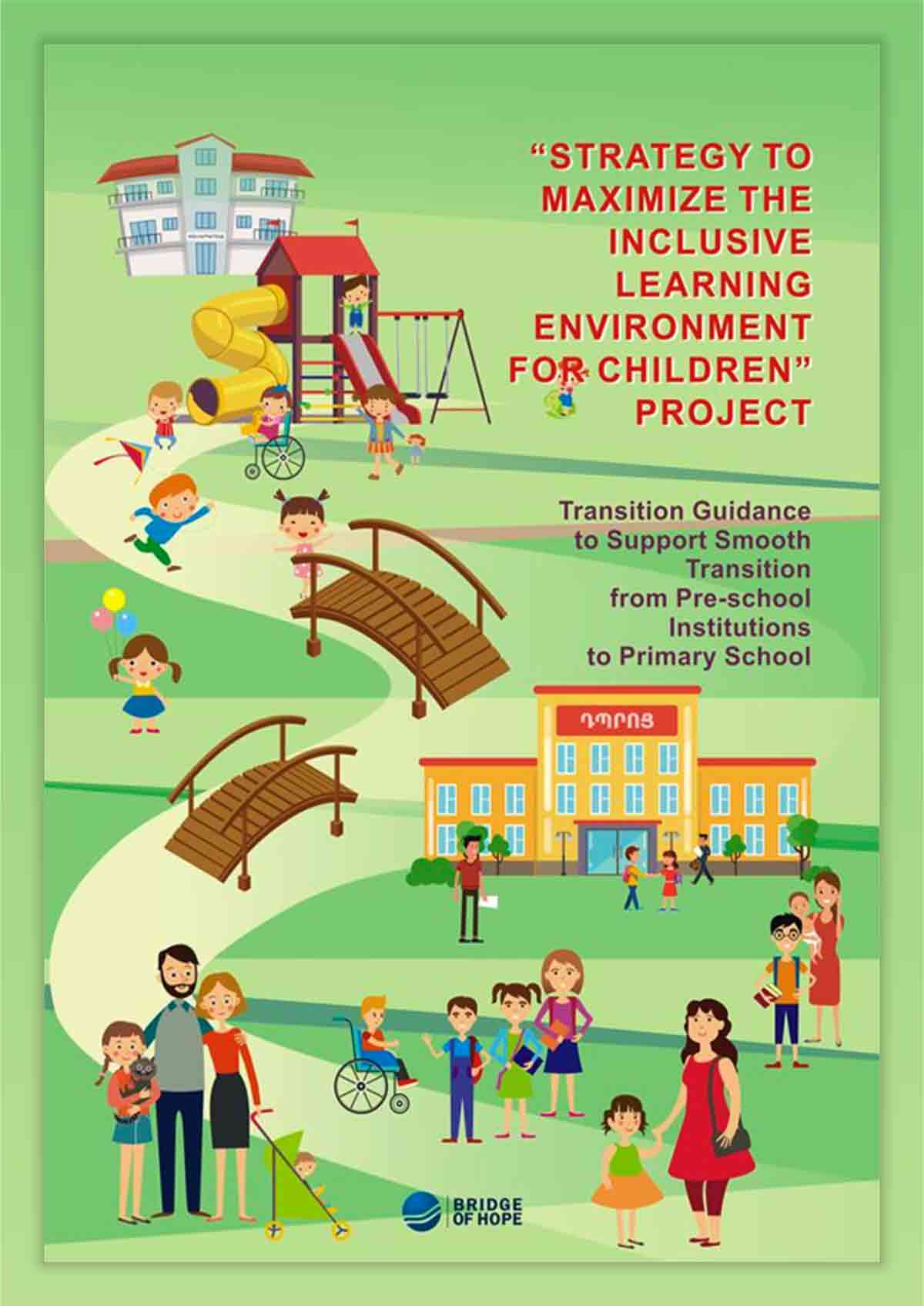Bridge of Hope created a guide to support inclusive transitions of children from pre-school to primary school using findings from research funded by the Open Society Foundations’ Early Childhood Programme. In this article, Su summarises the key principles of smooth transitions from the guide.
What do we mean by transition?
Transition should be understood as a process, not simply a one-off event. A move into a new education setting happens over time, from when the child begins to get ready to start a new setting to the time when they feel that they have adjusted to this new situation. Therefore, transition programmes supporting children should help them to feel comfortable, secure and confident in their new environment.
When they move from pre-school to primary school settings, children may need to adapt to leaving the home and/or pre-school environment and moving to different environments with different toilets, classroom layouts, cafeterias, outdoor spaces, approaches to teaching and learning, and potential friendships.
Children may feel excited and proud to be making such transitions. They may easily adapt to new surroundings and conditions or feel nervous and uncertain. Some face serious stress and anxiety when small changes happen in their usual routine, which can have an impact on their behaviour and understanding.
Regardless of how a child feels about their transition, it is important to ensure that what is familiar to them supports their move as they enter a new environment. If they are in need of additional educational support, the smoothness of the transition becomes even more important.
Guiding principles of transition
Smooth and effective transitions require careful planning before, during and after the move, with a clear understanding on the part of all involved of the key principles which guide the transition processes.
- All children have a right to education and to be included in decisions affecting them. They and their parents should have the opportunity to visit the setting they are moving to in advance. The class teacher should visit the pre-school settings and conduct home visit for learners with additional needs.
- Relationships are key and effective transitions require mutual trust and respect.
- Each child develops in their own way and needs a flexible individual transition plan that is responsive to their individual needs.
- Interagency working is essential. All staff in pre-schools and primary schools should work together, and with other agencies based on the child’s needs, to support effective person-centred planning.
- A cooperative, enabling environment should support open, trustful communication between all parties, through meetings set up well in advance, to review the setting the child transitions into, and discuss and agree special supports and classroom adaptations
- Allow time for the child to be included in the transition and for pre-school and primary school staff to work closely with families to understand what the child needs.
- Even very young children have a view on what they need and what works best for them. Children communicate in different ways, not always verbally. Time should be taken to seek children’s viewpoints, to make sure that they know that these views are important and can lead to change.
- Parents are a crucial source of information on their children and should be involved in transition arrangements. The information they can share can be valuable and important for drawing up the child’s plan.
Perhaps the best possible transitions are those where the ending of one education stage and the beginning of another are merged to create a seamless move between the settings. For example, using familiar resources from the pre-school to support familiarity in primary school. Strong plans map out the process and ensure that key partners are included, communicate and collaborate. Strong and supportive relationships can be established between all those involved, including: parents/caregivers, pre-school staff, school staff, management of both settings, health professionals, and school or community social workers.

No single approach to transition is correct. The guiding principles for effective practice enable a range of potential approaches to be developed that pre-school and primary school settings can explore together to find what is best within their contexts to best meet the needs of their children, families and communities.
Further reading
Research report: Education Transition for Children with Disabilities in Armenia
Manual: Transition Guidance to Support Transition from Pre-school Institutions to Primary School
Poster: Inclusive Transition (available in 14 languages)
Contact: Su is programme officer at EENET and a research associate at Manchester Metropolitan University. Email: sucorcoran@eenet.org.uk
